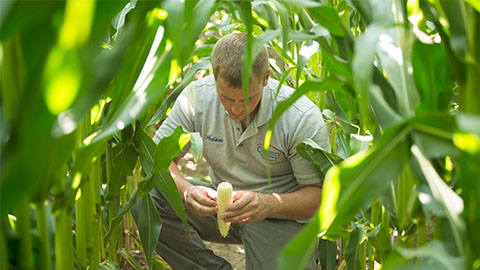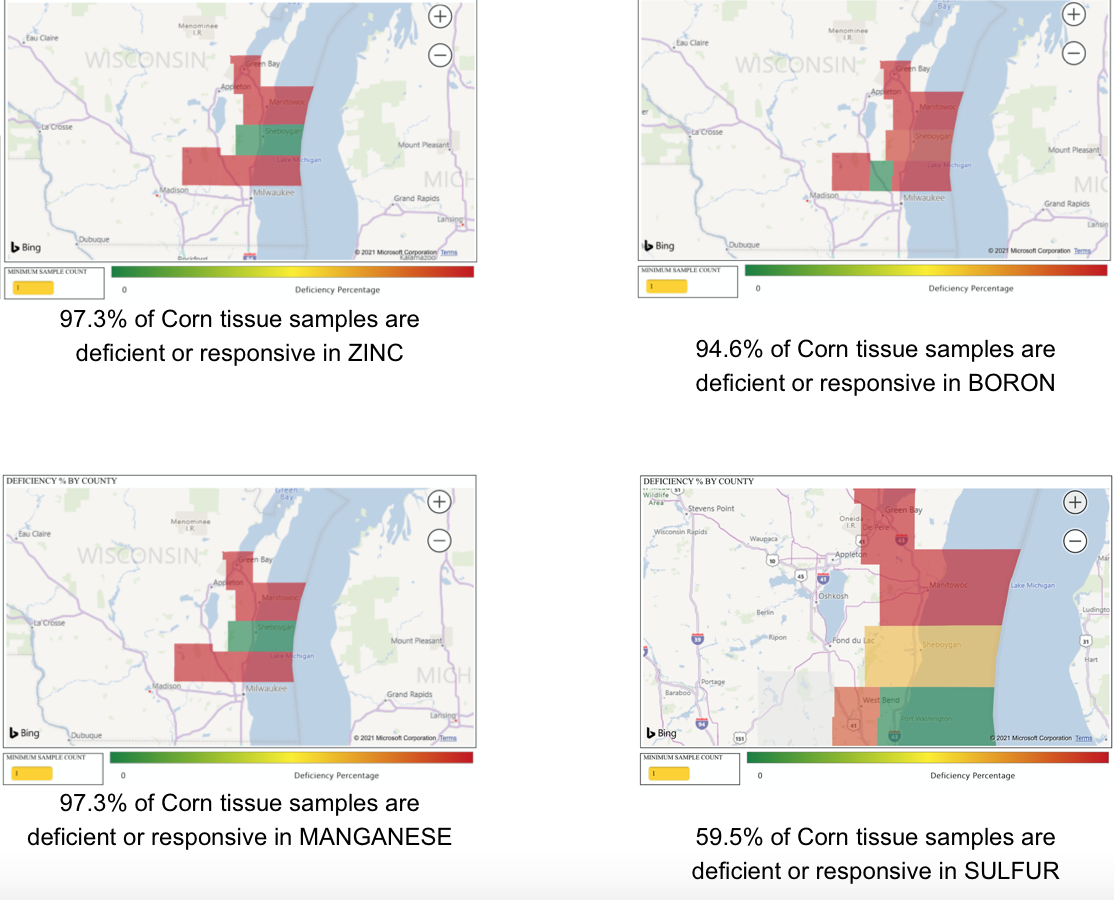Is Your Crop Hungry?
Jun 02, 2021

If you have yours Macronutrients covered, it is important to look at your micronutrients. In a year like this where commodity prices are up all around, it pays to ensure your crop is well fed. Lets take a look at some local data as we consider Micros on our corn crops for this year.
Micronutrients are needed in smaller quantities compared to macronutrients, but their importance on plant nutrition for your crops can’t be overstated. With corn, there are four micronutrients we encourage you to focus on. The first is Zinc, which is commonly one of the most deficient micronutrients in our area. It is critical that plants have a constant supply of Zinc throughout the season to meet growth and development needs. In addition, Manganese, Boron and Sulfur are also vital for growing robust plants and increased yield potential.
As you’re comparing micronutrient options, ask for credible data to support any product claims and consult your trusted Country Visions Advisor to ensure you’re getting the right product for your needs.

Source: WinField United NutriSolutions® 2012-2020 data
When applying micronutrients, timing plays an important role in making sure the plant utilizes the application properly. Nutrients like Zinc are crucial for building a strong foundation for your corn crop in the early stages, but have less of an impact with later applications. An important milestone to keep in mind is the V6 stage – this is when the corn plant determines how many kernels around its ear will have. This is an important reminder to protect your bushels from the moment the seed hits the ground.
Micronutrients are needed in smaller quantities compared to macronutrients, but their importance on plant nutrition for your crops can’t be overstated. With corn, there are four micronutrients we encourage you to focus on. The first is Zinc, which is commonly one of the most deficient micronutrients in our area. It is critical that plants have a constant supply of Zinc throughout the season to meet growth and development needs. In addition, Manganese, Boron and Sulfur are also vital for growing robust plants and increased yield potential.
As you’re comparing micronutrient options, ask for credible data to support any product claims and consult your trusted Country Visions Advisor to ensure you’re getting the right product for your needs.

Source: WinField United NutriSolutions® 2012-2020 data
When applying micronutrients, timing plays an important role in making sure the plant utilizes the application properly. Nutrients like Zinc are crucial for building a strong foundation for your corn crop in the early stages, but have less of an impact with later applications. An important milestone to keep in mind is the V6 stage – this is when the corn plant determines how many kernels around its ear will have. This is an important reminder to protect your bushels from the moment the seed hits the ground.